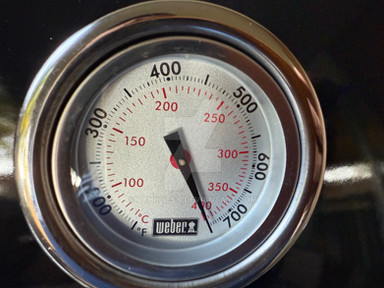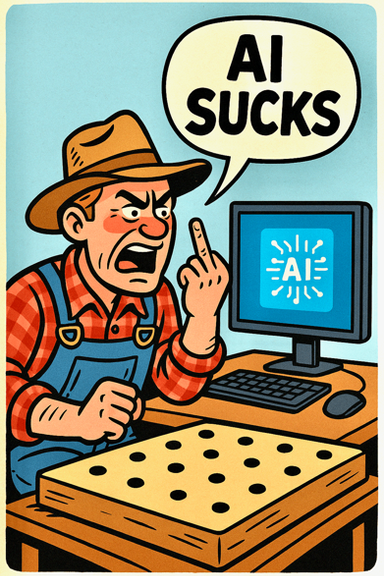HOME | DD
 freixas — Sharpening Tutorial
freixas — Sharpening Tutorial

Published: 2010-06-10 13:15:19 +0000 UTC; Views: 8337; Favourites: 147; Downloads: 476
Redirect to original
Description
If you learn something significant from this tutorial, could you please come back and fav it? Thanks!There is a PDF version of this tutorial.
Ever wondered how sharpening works in Photoshop (or other image processing programs)? Read this paper. I guarantee, even if you think you're an expert on sharpening, you will find something that will surprise you. All the information in the paper is backed by months of research and testing.
The paper is divided into two parts: one provides an overview of how sharpening works in general and in Photoshop, the other provides detailed instructions and mathematics to back up every claim I make. You will discover that many tutorials on sharpening—and even the Photoshop manual!—have incorrect information and you will have the tools to verify that for yourself. You will also learn why I think some popular sharpening methods might not yield the best images.
If you discover any errors, please let me know.
To page through the tutorial, click on the page corners.
----------------------------------------
Want fullview back in v7? Try my fullview restoring script .
Related content
Comments: 39

Thanks a lot! Helps beginners like me understanding what happens in Photoshop a little better
👍: 0 ⏩: 0

Very intriguing insights. Thanks for the time spent delving into this!
👍: 0 ⏩: 0

O-oh man. This looks like what my signal processing final is going to be on. *Bookmarks to study for later* >u>
👍: 0 ⏩: 1

I was looking for some useful informations about sharpening on web, but your "tutorial" is just what I needed 
👍: 0 ⏩: 0

freixas...ido not know if my english is poor or my skills badder , but I can not find your tutorial or investigation , even your pdf version is not avaible
👍: 0 ⏩: 0

Very interesting. I admint I skipped a lot of the hard core technical stuff (for a time when my brain is functioning better) but you made some interesting points. Made me rethink my approach. I shall be mor eobservant in future. Thanks.
👍: 0 ⏩: 0

you lost me at... a few months ago, i knew very little about how sharpening worked......lol
👍: 0 ⏩: 0

I'm going to look into this. Thanks for taking the time to upload ^_^
👍: 0 ⏩: 0

many thanks for sharing this it was extremely informative for me
👍: 0 ⏩: 1

I'm glad to hear it was useful.
👍: 0 ⏩: 0

Tony, this is a very well conceived paper on a difficult subject. I suspect that some of it is over the heads of many people, but it is an important piece of work. I congratulate you on the experimentation and work that went into producing this. I have downloaded it and begun reading it, but it will take a little time to digest it all. Again, thanks for sharing this work with us.
👍: 0 ⏩: 1

Thank you. Part 2 (the interesting part 
👍: 0 ⏩: 1

I'll attempt to provide cogent comments as I read through it and play around.
👍: 0 ⏩: 0

Wonderful article! Never really thought so much about how things work in Photoshop. I knew high pass was opposite to Gaussian blur but not so much more. I use some of those techniques. Mostly high pass filter with some kind of blending mode. But I think that the hardest part isn't sharpening. It's doing it without ruining the picture. I often get very much noise when I sharpen and haven't found a good way to do it yet without the noise. I use Lightroom 3 to remove the noise.
👍: 0 ⏩: 1

There's a lot of material in this article, but there is a lot still missing. Look up articles on sharpening with an edge mask. The idea is to sharpen only the edges so that the noise in smooth regions of the image is not made worse. You can use an edge mask with any sharpening algorithm.
Another thing to try (if you have Photoshop) is Smart Sharpen/Remove Lens Blur. I suspect it functions as a USM with an edge mask.
Finally, in RAW mode (and maybe in Lightroom), sharpening has a "Mask" adjustment. Guess what that does? According to descriptions (which I haven't verified), it creates an edge mask and blends it in by the adjustment amount. Usually, we don't get a chance to do the final sharpening in RAW mode, but if Lightroom offers this adjustment, you may be able to use it to sharpen without increasing noise.
👍: 0 ⏩: 0

Glorious! 
Thanks again!
👍: 0 ⏩: 1

You're welcome! I'm glad I got you thinking about this. Maybe you'll have a chance to do your own testing of some favorite feature and maybe reporting back to DA on what you found.
👍: 0 ⏩: 0

Hi !
I am downloading it !
Thanks for providing information. I have been working with PS for only one year and every tip helps. I have never use sharpening because I was unsure on how to, so it might help me very much!!
👍: 0 ⏩: 0

Wow. If I can ever understand all this, I think I might be able to make some use of it! For now, I'll continue my (rather unscientific) method of "playing with it" until it looks right. Generally I use smart sharpen on images resized using bicubic sharper unless something in that process creates results that don't look right. I'll freely admit that I have no clue what all these options actually do.
Thank for the in-depth documentation!
👍: 0 ⏩: 1

I'm sure there is little in my article that you would have trouble understanding. Just take one item and think about it a bit until you get it. Once you've figured out a few things, the rest will come much easier. I think that trying to absorb it all at once can be a bit overwhelming. Also, I realize that some people freeze up as soon as they see a math equation, but you don't have to understand all the math in order to get the basic idea.
I might suggest trying Smart Sharpen/Remove Lens Blur with Bicubic resize (not Bicubic sharper) and see how that works for you.
👍: 0 ⏩: 1

Oh. I'm sure if I sat with it long enough I'd work through it all. But that would require me to be... less than my normal lazy.
One day I'll read through it in depth.
I'll give the bicubic resize a try. I've noticed that bicubic sharper can be detrimental to images with a lot of fine detail.
👍: 0 ⏩: 0

Excellent explanation! I see photoshop the same way, in the part about the software rendering a sort of optical illusion. Once I had a greater understanding of how it worked, it really helped me with using the software.
👍: 0 ⏩: 1

Exactly! The more you understand how something works, the better you can apply it. It's too bad Adobe doesn't provide this level of detail.
👍: 0 ⏩: 0

this is definitely helpfull, i hope you have time to carry on your experimentations!
👍: 0 ⏩: 1

I definitely want to continue. Glad it was helpful.
👍: 0 ⏩: 0

Very thorough and concise. I would agree that this is not necessarily a tutorial, but I would say it is required reading for anyone interested in finding their own sharpening technique(s). Thank you for your research and effort into this!
👍: 0 ⏩: 1

You're welcome! You were one of the ones who started me on the path that led to this paper, so I'm glad if I was able to give something back.
👍: 0 ⏩: 0

Interesting sentence. Depending on whether I add a period before or after the "not", the meaning changes to the complete opposite. I'll assume the period goes before "not" and say thanks!
👍: 0 ⏩: 1

laughs yes of course my poor grammar skills showed there colors
👍: 0 ⏩: 0

1) excellent information. thank you for sharing;
2) I don't use PS, but I did stay in a Holliday Inn Express last night... GIMP, Paint.net, and even a little Pixlr.com, and can use this info. with those, too.
3) I did not have any way to substantiate my belief that the "USM method" is not a "better" way to sharpen. Perhaps I still don't, but at least I now have a co-anti-conspirator;
4) for everyone else reading this, repeat after me, "Tony is waaaay smarter than me." Say it again, and believe it.
5) Not really a "tutorial", is it? Me thinks the DA community would be more akin to the "push button X, then button Y" methodology, as opposed to this "why stuff does what it does" analysis.
6) MIT called. They want their super-computer back so they can continue their studies into the Fuzzball theory.
Coach
PS: Thanks again for sharing this info.
👍: 0 ⏩: 1

LOL
By the way, I never complained about USM (unsharp mask to the uninitiated). I did note problems with the "ultra-fine" USM, if that was what you meant.
👍: 0 ⏩: 1

the ultra fine is what I meant.
👍: 0 ⏩: 1

By the way, I'm still investigating this. Until I can get a hold of a few pro photographer who use this technique and are willing to share both an optimally sharpened image (using this method) and the original source image so I can analyze both, it's still an open question.
I have some ideas for the analysis Any pro's willing to share? I don't even need a complete image—a small crop would be sufficient.
👍: 0 ⏩: 0





























